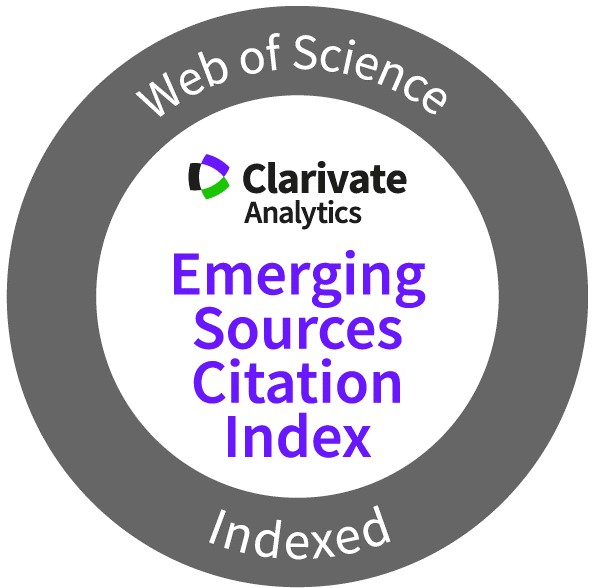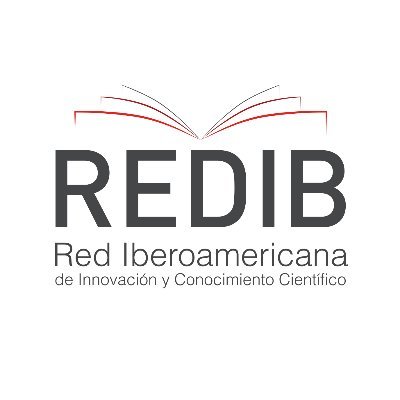Antrozoología de la cognición: igualando las diferencias
Palabras clave:
Antropomorfismo, cognición, herramientas, primates, singularidadResumen
: La antrozoología es entendida como el estudio de la relación, o el vínculo, humano-animal. Ese vínculo se construye por sobre una discontinuidad: la noción de que humanos y animales son cualitativamente distintos. La construcción de nuestro conocimiento es mediada por un modo singular de percepción, procesamiento y representación. Generamos y proponemos mapas para explicarnos a nosotros mismos y a los otros; usamos nuestra propia cognición para evaluar la presencia o no de capacidades cognitivas en otras especies. Cuestionamos las representaciones que hacen esos otros, las ordenamos según niveles y si no ajustan a nuestro mapa, simplemente las negamos. A veces los mapas que usamos no nos permiten orientarnos, son incompletos e incluso obsoletos. Uno de esos elementos que empezaron por ser exclusivamente humanos, por lo tanto distintivos, y acabaron siendo generales es la cognición. El análisis de esta temática conecta con otro argumento central esgrimido a favor de la excepcionalidad humana: el uso y fabricación herramientas. Nuestra propuesta es poner en discusión el valor de nuestras propias representaciones como herramientas, siempre perfectibles, de acceso a las mentes de los que clasificamos como no-humanos. Entender finalmente que la cognición es una adaptación y por eso el ser humano es excepcional del mismo modo en que lo son las otras especies. Todas son excepciones porque no hay reglas computacionales únicas y fijas, y por haber evolucionado, son específicas de acoplamientos únicos entre individuos y entornos.
Citas
Allen, C., & Bekoff, M. (2007). Animal minds, cognitive ethology, and ethics. The Journal of Ethics. 11, 299–317.
Beck, B. (1980). Animal tool behavior: The use and manufacture of tools by animals, New York, Garland STPM Press.
Bekoff, M. (2002). Minding animals. Awareness, Emotions, and Heart, New York, Oxford University Press.
Burghardt, G. M. (1991). Cognitive ethology and critical an¬thropomorphism: A snake with two heads and hognose snakes that play dead. In C. A. Ristau (Ed.), Cognitive ethology: The minds of other animals: Essays in honor of Donald R. Griffin (pp. 53-90). Hillsdale, NJ: Lawrence Erlbaum Associates.
Burghardt, G. M. (2004). Ground rules for dealing with an¬thropomorphism. Nature, 430, 15.
Burghardt, G. M. (2007). Critical Anthropomorphism, uncritical anthropocentrism, and naïve nominalism. Comparative Cognition & Behavior Reviews. 2, 136-138.
Byrne, R. W., & Russon, A. E. (1998). Learning by imitation: A hierarchical approach. Behavioral and Brain Sciences. 21, 667–721.
Darwin, C. (1881). The Formation of Vegetable Mould, through the Action of Worms with Observations on Their Habits, Chicago, University of Chicago Press.
Darwin, C. (1981 [orig. 1871]). The descent of man, and selection in relation to sex. (Vol. 1, pp. 105, 46). Princeton, New Jersey, Princeton University Press.
De Waal, F. (2016). ¿Tenemos suficiente inteligencia para entender la inteligencia de los animales? Tusquets.
Dyer, F. C. (1994). Spatial cognition and navigation in insects. In Real, L. A. (Ed.), Behavioral mechanisms in evolutionary ecology (pp. 66-98). Chicago, University of Chicago Press.
Escobar Aliaga, M., & García González, C. (1997) La importancia de la mano y de la manipulación en la adaptación de los primates. En F. Peláez del Hierro & V. Baró. Etología: bases biológicas de la conducta animal y humana. Zaragoza, Pirámide.
Ferrari, H. R., Lázaro, L. C., & Tarzia C. E. (2018). Las cuatro preguntas de Tinbergen. Colección Libros de Cátedra, EDULP. ISBN: 978-950-34-1717-1
Fisher, J. A. (1991). Disambiguating anthropomorphism: An interdisciplinary review. Perspectives in Ethology, 9, 49-85.
Fragaszy, D., Visalberghi, E., & Fedigan, L. (2004). The complete capuchin. The biology of the genus Cebus, Cambridge University Press.
Gómez, J. C., & Colmenares, F. (1997). Mecanismos y causas internas de la conducta. En J. Carranza (Ed.), Etología. Universidad de Extremadura.
Gómez, J. C. (1990). Lenguaje y cognición social en los monos antropoides. En L. Aguado Aguilar (Ed.), Estudios experimentales sobre la mente animal (pp. 219-237). Alianza Psicología.
Grier, J., & Burk, T. (1992). Biology of Animal Behavior 2ª ed. Dubuque , Iowa. USA, W. M. C. Brown Publishers.
Hodos, W., & Campbell, C. B. G. (1969). Scala naturae: Why there is no theory in comparative Psychology. Psychological review, 76, 337-350.
Humle, T., & Matsuzawa, T. (2002). Ant-dipping among the chimpanzees of Bossou, Guinea, and some comparisons with other sites. American Journal of Primatology, 58, 133-148.
Kamil, A. (1998). On the Proper Definition of Cognitive Ethology. Papers in Behavior and Biological Sciences. Paper 18.
Klimovsky, G. (1997). Las desventuras del conocimiento científico. Buenos Aires, Argentina, AZ editora.
Köhler W. (1925). The mentality of Apes. New York. Harcourt, Brace & Company Inc.
Lázaro, L. C. (2000). Secuencias de transformación de objetos en monos caí en cautiverio: Un posible antecedente para la fabricación y uso de herramientas. Revista Etología. Brasil, 2(2), 137-141. ISSN 1517-2805.
Makepeace Tanner, N. (1988). Becoming human, our links with our past. In T. Ingold (Ed.), What is an animal? (pp. 127-140). London: Unwin Hyman.
Matsuzawa, T. (1996). Chimpanzee intelligence in nature and in captivity: Isomorphism of symbol use and tool use. In J. Goodall & J. Itani (Authors) & W. McGrew, L. Marchant, & T. Nishida (Eds.), Great Ape Societies (pp. 196-210). Cambridge: Cambridge University Press.
Morgan, C. L. (1903 [orig.1894]). An introduction to comparative psychology. (p.148). London, The Walter Scott Publishing Co., LTD.
Ottoni, E. & Mannu, M. (2001). Semifree-ranging tufted capuchins (Cebus apella) spontaneously use tools to crack open nuts. International Journal of Primatology, 22(3), 347-358.
Pfungst, O. (1911). Clever Hans (The horse of Mr. von Osten): A contribution to experimental, animal, and human psychology. New York, Holt, Rinehart & Winston.
Real Academia Española. [RAE]. (2014). Antropomorfismo. rae.es.
Real, L. (1991). Animal choice behavior and the evolution of cognitive architecture. Science, 253, 980-986.
Real, L. A. (1994). How to think about behavior: An introduction. In Real, L. A. (Ed.), Behavioral mechanisms in evolutionary ecology (pp. 1-8). Chicago, University of Chicago Press.
Romanes, G. J. (1882). Animal intelligence. London, Kegan Paul & Trench.
Sakura, O., & Matsuzawa, T. (1991). Flexibility of Wild chimpanzee nut cracking behaviour. Using stone hammers and anvils: an experimental analysis. Ethology, 87, 237-248.
Shumaker, R. W., Walkup, K. R., & Beck, B. B. (2011). Animal tool behavior. The use and manufacture of tools by animals. The Johns Hopkins University Press.
St Amant, R. (2001). The Use of Tools. Department of Computer Science Technical Report. North Carolina State University. TR-2014-4.
Strier, K. (2007). Primate behavioral ecology. Pearson Education.
Tebbich, S., & Bshary, R. (2004). Cognitive habilities related to tool user in the woodpecker finch, Cactospiza pallida. Animal Behaviour, 67, 689-697.
Tinbergen, N. (1963). On aims and methods of ethology. Zeitschrift für Tierpsychologie 20, (4), 410-433.
Tokida E., Tanaka, I., Takefushi, H., & Hagiwara, T. (1994). Tool using in Japanese macaques: use of stones to obtain fruit from a pipe. Animal Behaviour, 47, 1023-1030.
Tonooka, R. (2001). Leaf-folding behavior for drinking wáter by wild chimpanzees (Pan troglodytes verus) at Bossou, Guinea. Animal Cognition, 4, 325–334.
Uexküll, J. v. (2016). Andanzas por los mundos circundantes de los animales y los hombres. (pp. 35-52). Buenos Aires: Cactus.
Urquiza-Haas, E. G., & Kotrschal, K. (2015). The mind behind anthropomorphic thinking: attribution of mental states to other species. Animal Behaviour, 109, 167-176.
Valsiner, J. (2019). The place of innovation in the life of apes. Wolfgang Köhler in his context. Preface. The mentality of apes. W. Köhler. (viii-XL). New York, Rutledge.
van Lawick-Goodall, J. (1970). Tool using in primates and other vertebrates. In D. Lehrman, R. Hinde, & E. Shaw (Eds.), Advances in the study of behavior, 3, 195-249. New York, Academic Press.
Van Schaik, C. P., Deaner, R. O. & Merrill, M. Y. (1999). The conditions for tool use in primates: implications for the evolution of material culture. Journal of Human Evolution, 36, 719-741.
Vauclair, J. (1996). Animal cognition. An introduction to modern comparative psychology. Harvard University Press.
Visalberghi, E. & Trinca, L. (1989). Tool use in capuchin monkeys: Distinguishing between performing and understanding. Primates, 30, 511-521.
Westergaard, G. & Fragaszy, D. (1987). The manufacture and use of tools by Capuchins monkeys (Cebus apella). Journal of Comparative Psychology, 101, 159-168.
Westergaard, G. & Suomi, S. (1993). Use of a tool set by Capuchin monkeys (Cebus apella). Primates, 34, 459-462.
Publicado
Cómo citar
Número
Sección
Los autores que publican en esta revista están de acuerdo con los siguientes términos:
- Los autores conservan los derechos de autor y garantizan a la revista el derecho de ser la primera publicación del trabajo al igual que licenciado bajo una Creative Commons Attribution License que permite a otros compartir el trabajo con un reconocimiento de la autoría del trabajo y la publicación inicial en esta revista.
- Los autores pueden establecer por separado acuerdos adicionales para la distribución no exclusiva de la versión de la obra publicada en la revista (por ejemplo, situarlo en un repositorio institucional o publicarlo en un libro), con un reconocimiento de su publicación inicial en esta revista.
- Se permite y se anima a los autores a difundir sus trabajos electrónicamente (por ejemplo, en repositorios institucionales o en su propio sitio web) antes y durante el proceso de envío, ya que puede dar lugar a intercambios productivos, así como a una citación más temprana y mayor de los trabajos publicados (Véase The Effect of Open Access) (en inglés).









